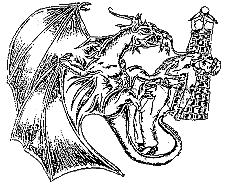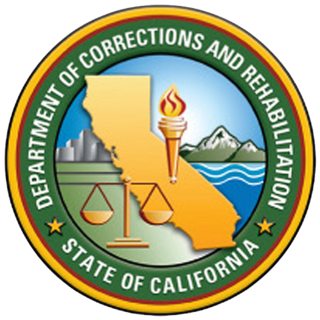
Folsom California State Prison is a California State Prison in Folsom, California, U.S., approximately 20 miles (32 km) northeast of the state capital of Sacramento. It is one of 34 adult institutions operated by the California Department of Corrections and Rehabilitation.

George Lester Jackson was an American author, activist and convicted felon. While serving an indeterminate sentence for stealing $70 from a gas station in 1961, Jackson became involved in revolutionary activity and co-founded the prison gang Black Guerrilla Family.

San Quentin Rehabilitation Center (SQ), formerly known as San Quentin State Prison, is a California Department of Corrections and Rehabilitation state prison for men, located north of San Francisco in the unincorporated place of San Quentin in Marin County.

The Black Guerrilla Family is an African American black power prison gang, street gang, and political organization founded in 1966 by George Jackson, George "Big Jake" Lewis, and W.L. Nolen while they were incarcerated at San Quentin State Prison in Marin County, California.

Jonathan Peter Jackson was an armed militant who died of gunshot wounds sustained during the armed invasion of a California courthouse.

Deuel Vocational Institution (DVI) was a state prison located in unincorporated San Joaquin County, California, near Tracy. The prison closed on September 30, 2021.
Stephen Mitchell Bingham is an American legal services and civil rights attorney who was tried and acquitted in 1986 for his alleged role in Black Panther George Jackson's attempted escape fifteen years earlier from San Quentin State Prison in Marin County, California, in 1971.
The Soledad Brothers were three inmates charged with the murder of a prison guard, John Vincent Mills, at California's Soledad Prison on January 16, 1970. George Jackson, Fleeta Drumgo, and John Clutchette were alleged to have murdered Mills in retaliation for the shooting deaths of three black prisoners during a prison fight in the exercise yard three days prior by another guard, Opie G. Miller. Clutchette and Drumgo were acquitted by a jury while Jackson was killed in a prison riot prior to trial.

Black August is a 2007 drama film directed by Samm Styles and starring Gary Dourdan, Darren Bridgett, Ezra Stanley, "Big" Leroy Mobley, and Don Williams. It was produced by Tcinque Sampson. The film centers on the story of George Jackson's life.

"George Jackson" is a song by Bob Dylan, written in 1971, in tribute to the Black Panther leader George Jackson, who had been shot and killed by guards at San Quentin Prison during an attempted escape on August 21, 1971. The event indirectly provoked the Attica Prison riot.
The San Quentin Six were six inmates at San Quentin State Prison in the U.S. state of California who were charged with actions related to an August 21, 1971 escape attempt that resulted in six deaths and at least two people seriously wounded. The San Quentin Six were Fleeta Drumgo, David Johnson, Hugo Pinell, Johnny Larry Spain, Willie Tate, and Luis Talamantez. The dead included George Jackson, a co-founder of the Black Guerrilla Family; two other inmates, and three guards.
Correctional Training Facility (CTF), commonly referenced as Soledad State Prison, is a state prison located on U.S. Route 101, 5 miles (8.0 km) north of Soledad, California, adjacent to Salinas Valley State Prison.

M. Gerald Schwartzbach is an American criminal defense attorney.
The Marin County Civic Center attacks were two related attacks in 1970 at the Marin County Civic Center courtroom in San Rafael, California, United States, tied to escalating racial tensions in the state's criminal justice system.
Fay Abrahams Stender was an American lawyer from the San Francisco Bay Area, and a prisoner rights activist. Some of her better-known clients included Black Panther leader Huey Newton, and the Soledad Brothers, including Black Guerrilla Family founder George Jackson.
Luis Talamantez is an American writer, poet, and prisoner's rights activist. He gained widespread recognition in the 1970s as a member of the San Quentin Six, a group of men charged with inciting the riot which killed three guards and three inmates, including George Jackson. Talamantez published his poetry while incarcerated and is perhaps best known for his collection of poetry, titled Life Within the Heart Imprisoned.

If They Come in the Morning: Voices of Resistance is a collection of writings about U.S. legal trials and prisons, edited by Angela Davis and published in 1971. Contributors included Black Panther Party members and the Soledad Brothers. As Davis' first book, it contains description of her experiences in prison. The book was positively received by African-American and communist media of the time.

Blood in My Eye is a book of political philosophy written by George Jackson, a co-founder of the Black Guerrilla Family. Jackson finished writing the book only days before he was killed at San Quentin State Prison on 21 August 1971. The book was first published on 1 January 1972.
Ruchell Cinque Magee was an American man who spent most of his life in prison. He pled guilty to aggravated kidnapping in the August 7, 1970 Marin County Civic Center courthouse attacks in San Rafael, California. Judge Harold Haley was killed in that attack, as were all of those involved in taking him and other hostages from the courthouse, with the exception of Magee—the only black survivor of the event.

W.L. Nolen was an American convict who co-founded the Black Guerrilla Family, in San Quentin State Prison in 1966, along with George Jackson. Nolen is considered the mentor of Jackson and is often credited with introducing Jackson to radical left-wing politics.












